Std 10 Physics all important Circuit diagram + Conceptual diagram
10th Exam 2022 : Science (Physics) Important Diagrams for Last Minute Revision
We present here some important diagrams for Class 10 Physics. Many of the class 10 students find it difficult to grasp the concepts of Physics. However, if learned through diagrammatical representations, this subject is not all that difficult. This is because diagrams aid in visual learning which is more effective than simply mugging up the concepts by writing or reading. Each diagram has been provided with a detailed summary for a clear understanding.
Important Physics diagrams for Class 10 are given below:
1. Verification of OHM’s Law
Ohm's law states that under constant temperature, the current passing through conductor is directly proportional to potential difference applied across it.
i.e., V = IR
Where,
V = potential difference
R = Resistance (constant)
I = Current
Ohm's law can be verified using following circuit diagram,
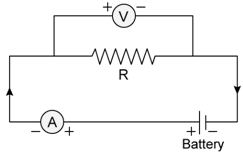
2. AC Generator
AC generator is a device which converts mechanical energy into alternating form of electrical energy. It works on the principle of electromagnetic induction. When a closed coil is rotated in a uniform magnetic field with its axis perpendicular to the magnetic field, the magnetic field lines passing through the coil change and an induced emf is produced causing the flow of current in it.
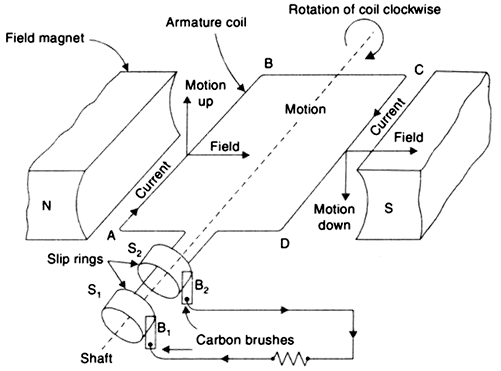
3. DC generator
DC generator is a device which converts mechanical energy into the direct form of electrical energy.
DC generator has split ring commutator instead of slip rings in the AC generator. Split ring commutator consists of two semicylindrical brass rings S1 and S2 rigidly attached to the two ends of the armature coil. As the armature coil rotates, the two split rings also rotate about the same axis of rotation.
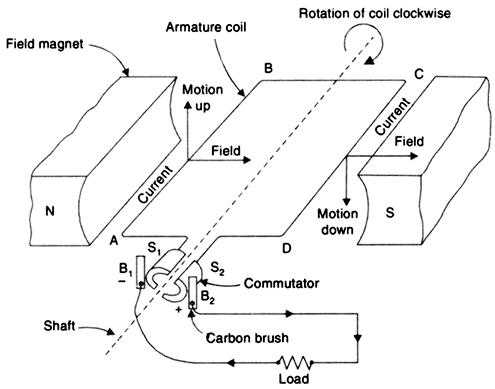
4. Human eye
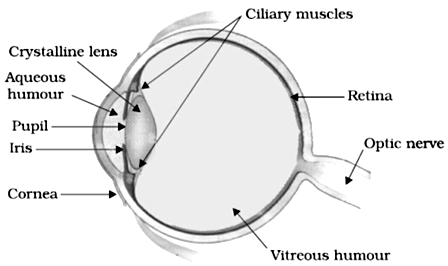
5. Defects of vision and their correction
(i) Myopia (near sightedness) and its correction with convex lens:
Myopia is the defect of the eye vision due to which a person can see the nearby objects clearly but cannot see the far objects so distinctly. In this case, the image is formed in front of the retina.
Myopia can be corrected by using a concave lens of suitable focal length in the spectacles of such a person.
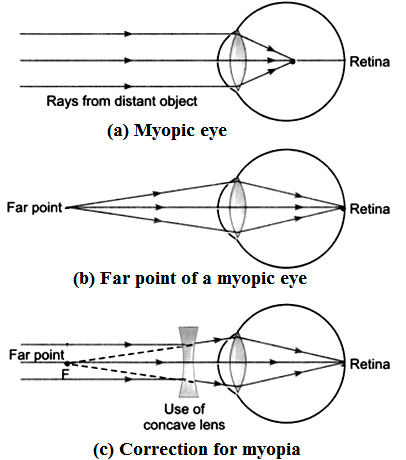
(ii) Hypermetropia (far sightedness) and correction with concave lens:
Hypermetropia is the defect of the eye vision due to which a person can see distant objects distinctly but cannot see nearby objects so clearly. In this case, the image is formed behind the retina.
Hypermetropia can be corrected by using convex lens of suitable focal length in spectacles.
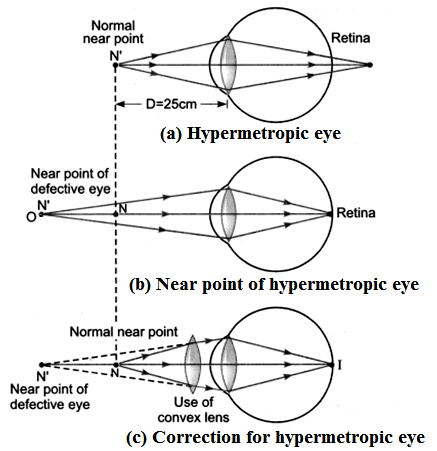
6. Refraction of Light through a Glass Prism
Prism is a transparent optical object with flat, polished surfaces that refract light. At least two of the flat surfaces must have an angle between them.
When a ray of light enters the glass prism it gets deviated two times. First when it enters the glass prism and second when it comes out of the prism. The emergent ray is divided by an angle to the incident ray. This angle is called the angle of deviation.
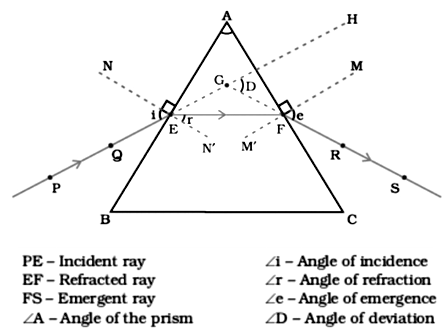
7. Dispersion of White Light by the Glass Prism
When a beam of white light is passed through a glass prism, it is split up into a band of colours called spectrum. This is called dispersion of white light. The spectrum of white light has the colours violet, indigo, blue, green, yellow, orange and red (VIBGYOR).
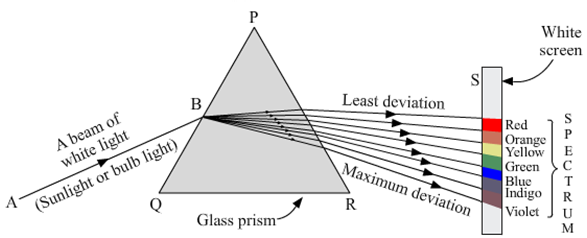
8. Recombination of the Spectrum of White Light
When a beam of white light is passed through a glass prism, it is split up into its component colours. When these colours are allowed to fall on an inverted glass prism it recombines to produce white light.
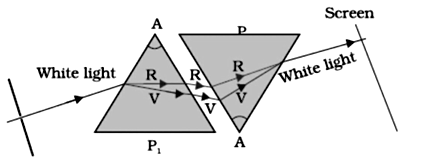
9. Rainbow Formation
A rainbow is a natural spectrum appearing in the sky after a rain shower. It is caused by the dispersion of sunlight by water droplets present in the atmosphere. The water droplets act like small prisms. They refract and disperse the sunlight which again reflected internally and finally refracted again when coming out of the rain drops. Due to the dispersion and internal reflection of sunlight by the water droplets, we see the rainbow.
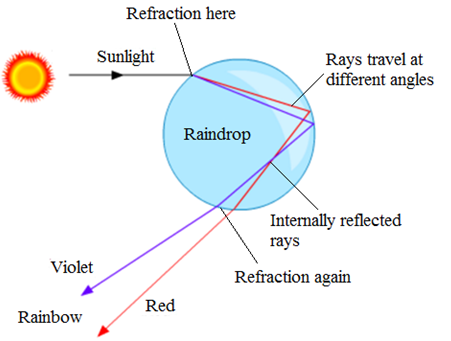
10. Refraction of Light Through Rectangular Glass Slab
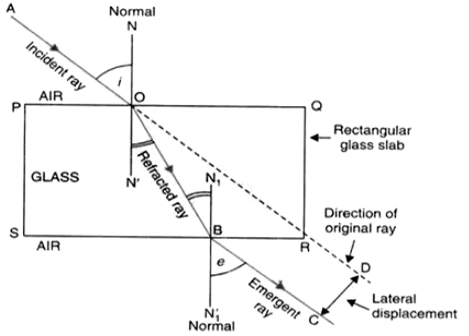
11. Atmospheric Refraction Effects
(i) Advance sunrise and delayed sunset: The sun is visible to us about 2 minutes before sunrise and about 2 minutes after sunset. This happens due to the apparent flattening of the sun’s disc at sunrise and at sunset which caused by the atmospheric refraction of sunlight.
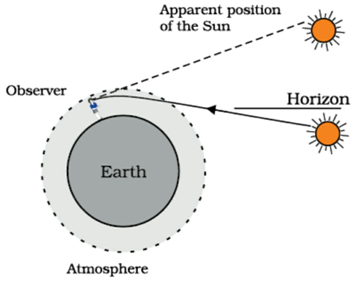
(ii) Reddening of The Sun at Sunrise And Sunset: The light form the sun near the horizon passes through thicker layer of air and has to travel larger distance to reach the earth atmosphere before reaching our eyes. Thus, most of the blue light of shorter wave length gets scattered away by the atmospheric particles and the light reaching our eyes is of longer wavelength which give rise to reddish appearance of the sun. However light from the overhead sun at noon would have to travel relatively shorter distance due to which only a little of blue light and violet colours are scattered causing the sun appear white.
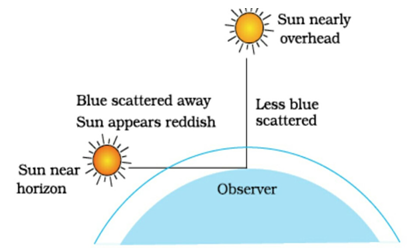
(iii)The Twinkling of Stars: The star light after entering the earth's atmosphere undergoes refraction in a continuous manner before it reaches the Earth. The atmospheric refraction is due to change in the refractive index at different level in atmosphere. The star light bends towards the normal, the apparent position is different from the actual position of star. As path of rays of light coming from star varies slightly then the apparent position of star also varies slightly and the amount of light entering the eye flickers. Sometimes, it is brighter and sometimes the star seems fainter. In this way, stars twinkle.
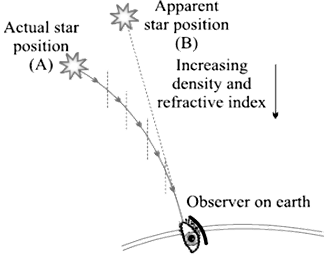
12. Image formation by concave mirror
(i) When the object is at infinity:
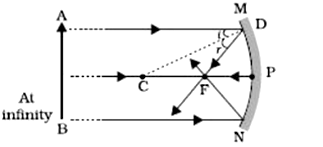
- Image is formed at focus.
- It is real, inverted and highly diminished.
(ii) When the object is beyond centre of curvature (C):
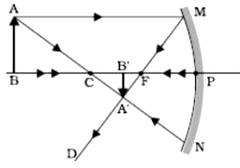
- Image is formed between F and C.
- It is real, inverted and smaller in size than that of the object.
(iii) When the object is at centre of curvature:
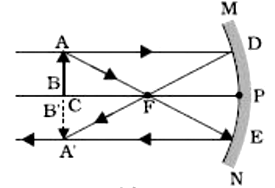
- Image is formed at C
- It is real, inverted and of same size.
(iv) When the object is between C and Focus:
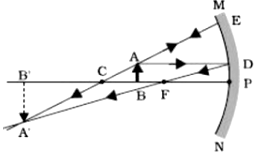
- Image is formed beyond C.
- It is enlarged, real and inverted
(v) When the object is at focus:
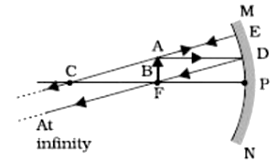
- Image is formed at infinity.
- It is real, inverted and highly enlarged.
(vi) When the object is between pole and focus:
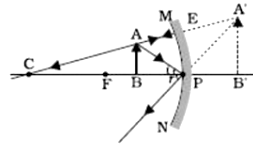
- Image is formed behind the mirror.
- It is enlarged, virtual and erect.
13. Image formation by convex mirror
(i) When the object is at infinity:
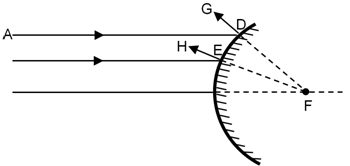
- Image is formed at focus, behind the mirror
- It is virtual, erect and diminished.
(ii) When the object is anywhere between infinity and pole
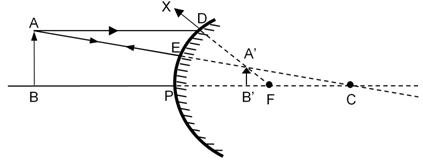
- Image is formed between pole and focus.
- It is erect, virtual and diminished.
Comments
Post a Comment